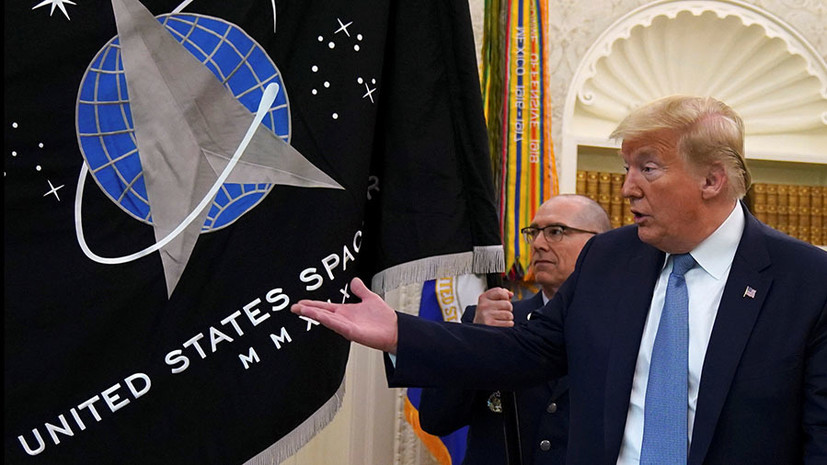US President Donald Trump announced the development of the “super-duper missiles” in the United States, which, according to the American leader, will be 17 times faster than existing counterparts in other states.
“We have, as I put it, a super duper rocket.” And recently, I heard that it is 17 times faster than those that are now, when compared with the fastest missile in the arsenal, ”Trump said at a meeting with the US Space Forces command in the White House.
The president further mentioned that, according to his estimates, Russia has missiles five times faster than existing weapons, and China allegedly develops missiles five or six times faster.
“In our country it’s 17 times, and this one (project. - RT) has just been approved,” the head of the White House said.
It should be noted that the president spoke at the ceremony of presentation of the US Space Forces, during which they presented a distinctive sign of this type of troops. This is the first new banner of a military unit in the last 72 years of the history of the United States.
However, speaking about the new missile, Trump did not name any technological details of the weapon. However, the American leader expressed confidence that the United States is a leader in the space industry.
“Space is our future, both in defense matters and in many other aspects. We are a leader in this matter, ”Trump said. According to the head of the White House, the United States is developing "incredible weapons at a level never seen before."
During a briefing, Trump spokeswoman Kaylee Mackenani was asked to talk about the new weapon, but she told reporters that the president’s words speak for themselves.
In turn, the head of the Pentagon, Mark Esper called this event a “historical moment”, noting that thanks to the creation of the Space Forces, the United States “will make space remain heaven that will not only cover America, but also support its economy.”
US Space Forces Formation
The United States Space Forces (USSF) were formed in December 2019, becoming the sixth in a row the US Armed Forces.
Note that Trump intended to create space troops back in 2018 and make them completely independent, but this plan was realized only at the end of 2019.
US space forces are under the jurisdiction of the country's civilian air force minister. The status of the USSF is comparable to that of the United States Marine Corps, that is, it is a separate type of armed forces, has its own commander in the status of chief of staff, but is subordinate to one of the ministries.
The new SPACECOM Space Command was formed in August 2019. It was the first combat command created in the United States since 2009. The structure included 87 units involved in missile warning, satellite operations, as well as space monitoring and support. The functions of the head of command are performed by John Raymond.
The first mission of a new type of US military began on March 26, 2020. On that day, the military communications satellite of the AEHF system was launched from Cape Canaveral.
Note that in April, the head of the US Space Forces, John Raymond, expressed the point of view according to which the United States loses its superiority over other countries in the space sphere.
“We manage critical space potential, and we need to be able to protect it. Now I am calm, we have a defensive and defense potential, but I am more concerned about our ability to act promptly and forestall the threat. Obviously, other countries are catching up with us, ”Raymond said during a videoconference organized by the Mitchell Institute.
During this speech, he also announced his intention to send a report to the US Congress with proposals for changing the financing and procurement of space systems. According to him, the recommendations included in the document are designed to help US Space Forces "advance rapidly" in the development of new space systems and take them into service, the American military commander added.
It should be noted that the draft federal budget for fiscal year 2021 includes $ 705.4 billion of defense spending, of which $ 15.4 billion is proposed to be allocated by the US Space Forces.

